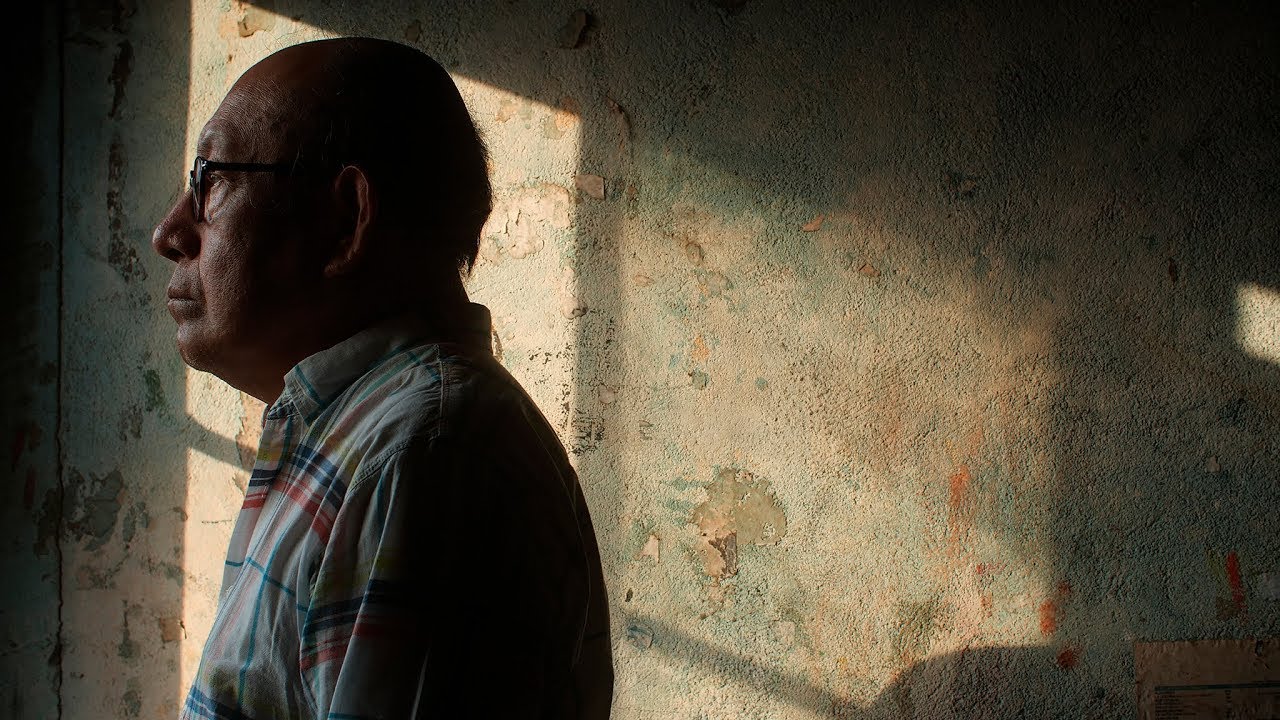Writer-director Anna Elena Tejera’s Panquiaco was screened as part of the Latin American cinema program at the Mar del Plata Film Festival. The film combines documentary and fiction. It tells slow and sad story of an elderly man named Sebaldo who has been working as a fisherman’s assistant in Portugal for many years. Sebaldo is a native of Panama. Nostalgia for his native land prevents Sebaldo from enjoying life. In the evenings after work, he goes to a bar, where he drowns his sorrows in drink and listens to melancholic songs.
Sebaldo dreams of returning to the village where he spent his childhood and felt himself truly happy. Sebaldo has traveled to many countries, but he has never experienced happiness as he did in his homeland.
Memories of childhood pop up in the film in the form of amateur videos. These sequences are shot on 16mm and are heavily frayed around the edges. But they are filled with sunshine and joy that make you feel the carefreeness of childhood.
When Sebaldo finally returns home he is disappointed. His village is desolate and destroyed. It no longer brings a feeling of happiness. This forces Sebaldo to delve deeper into the cause of his sadness. He tries to find peace in communication with relatives and people from this village . But these meetings also do not bring an answer to the main question: where should Sebaldo find happiness?
The atmosphere of Sebaldo’s confusion is emphasized by scenes of cold silence, endless landscapes in which the lonely fragile figure of our protagonist is lost. Sebaldo’s abandonment is beautifully conveyed through the film’s visuals.
To transcend his unhappy state, Sebaldo plunges into religion, politics and myth. He seems to be trying to connect to the vital energy that is inherent in these fields. Religion gives him the confidence that human existence does not end with death. A political rally helps him overcome loneliness and find unity with a huge number of like-minded people. And Latin American mythology tells Sebaldo that he is not alone in his grief, that many other people in bygone times went through similar difficult searches for happiness.
Panquiaco is Tejera’s feature debut, but in this film you don`t feel the uncertain hand of a young filmmaker. Tejera skillfully conveys her protagonist’s inner world through everyday trifles. For example, Sebaldo’s dead end is beautifully encapsulated in a short scene in which he sits at a table and discovers that every one of the lottery tickets he just bought is a loser. Sebaldo resembles a fish washed ashore, desperately swallowing air and suffocating.
Panquiaco finds mysticism in everyday life, pushing the literal plot into the background, focusing instead on the spiritual journey of its protagonist. This aspect of the film relates it to the masterpieces of Carlos Reygadas and Andrei Tarkovsky, whose Nostalgia raised the same quandary: a lost soul, seeking peace in this world, tries to return to its home and happy memories, but in reality it is impossible to return there, so the soul seeks peace in a parallel world.
Like the works of the aforementioned directors, Panquiaco has its own unique cinematic language. This is a movie in which many scenes cannot be explained in words or by any means other than pure cinema. And this is precisely what distinguishes film language in its purest form.
The fulcrum of such an inventive film language is editing. Several plot lines are intertwined here like a long braid. The spiral of the past tense (memories) revolves around the present tense (Sebaldo’s reflections), intertwined with myths (ritual scenes of the tape). The transitions between these three lines of the film are associative and intuitive, as in poetry.
Another undoubted advantage of the film are found in its portraits. The colorful faces of the characters, illuminated by open fire or covered with mysterious shadows, create a striking mystical effect.
The film’s exotic title echoes the name of a Panamanian man who, in the 16th century, showed the Spanish explorer Vasco Nuñez de Balboa the path to the South Sea (now called the Pacific Ocean). Nuñez himself is a very revered figure Panama’s history. Streets are named in his honor, and his portrait is printed on Panama’s national currency. At the same time, Panquiaco himself, who paved the route to the ocean, is less known.
Some of the most striking scenes in Panquiaco depict the Panamanian Indians who call themselves Doule. They appear in the most mystical episodes, striking the imagination with their chants, spectacular portraits and amazing rituals.
This nation has a very specific language that sounds like Japanese. Doule language is very ancient. That’s why there are simply no separate modern words in it, such as “photographer”. To name this profession, the Doule use three words at once “wagah bourbah gai”, which literally translates as “hunter for other people’s souls.” It is symbolic that this wording very accurately describes Tejera’s film language. After all, she is trying to show the human soul, without being distracted by its external embodiment.
Anton Filatov
© FIPRESCI 2020
Edited by José Teodoro

